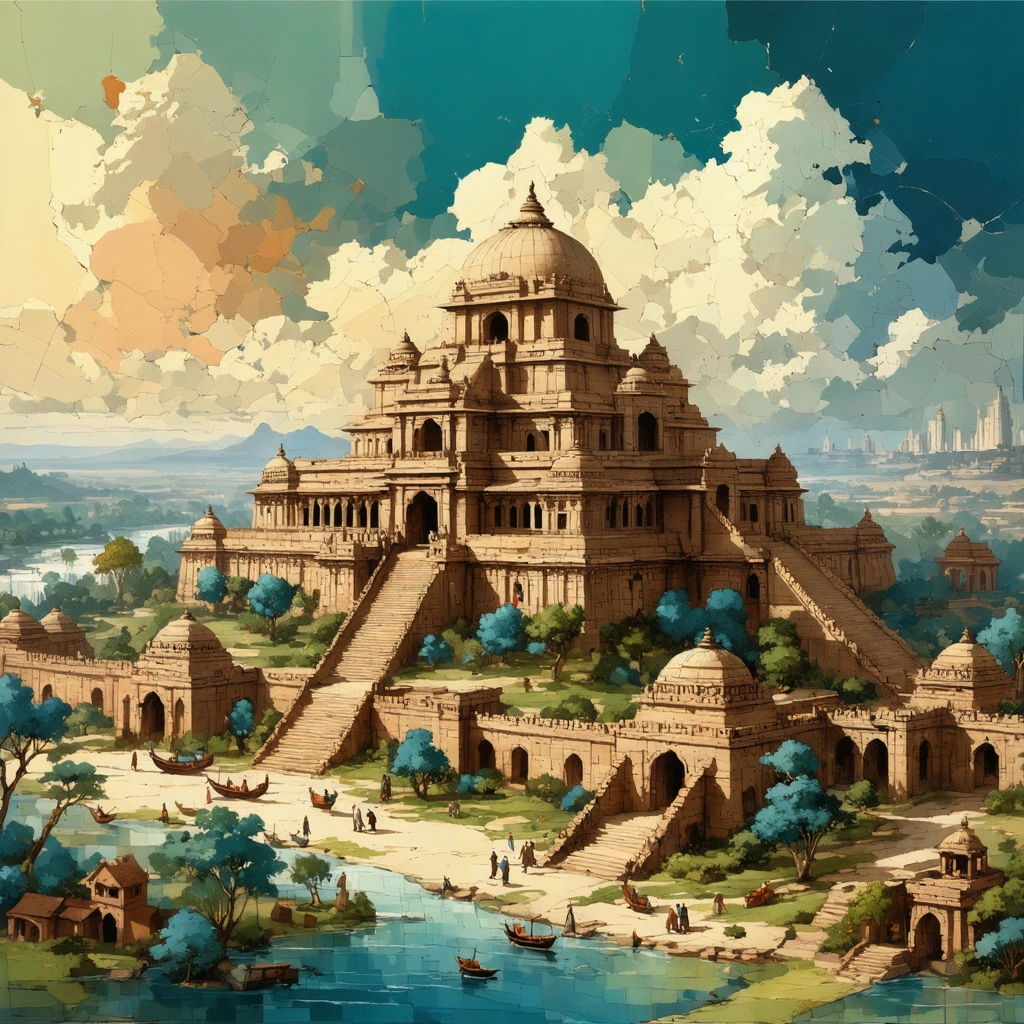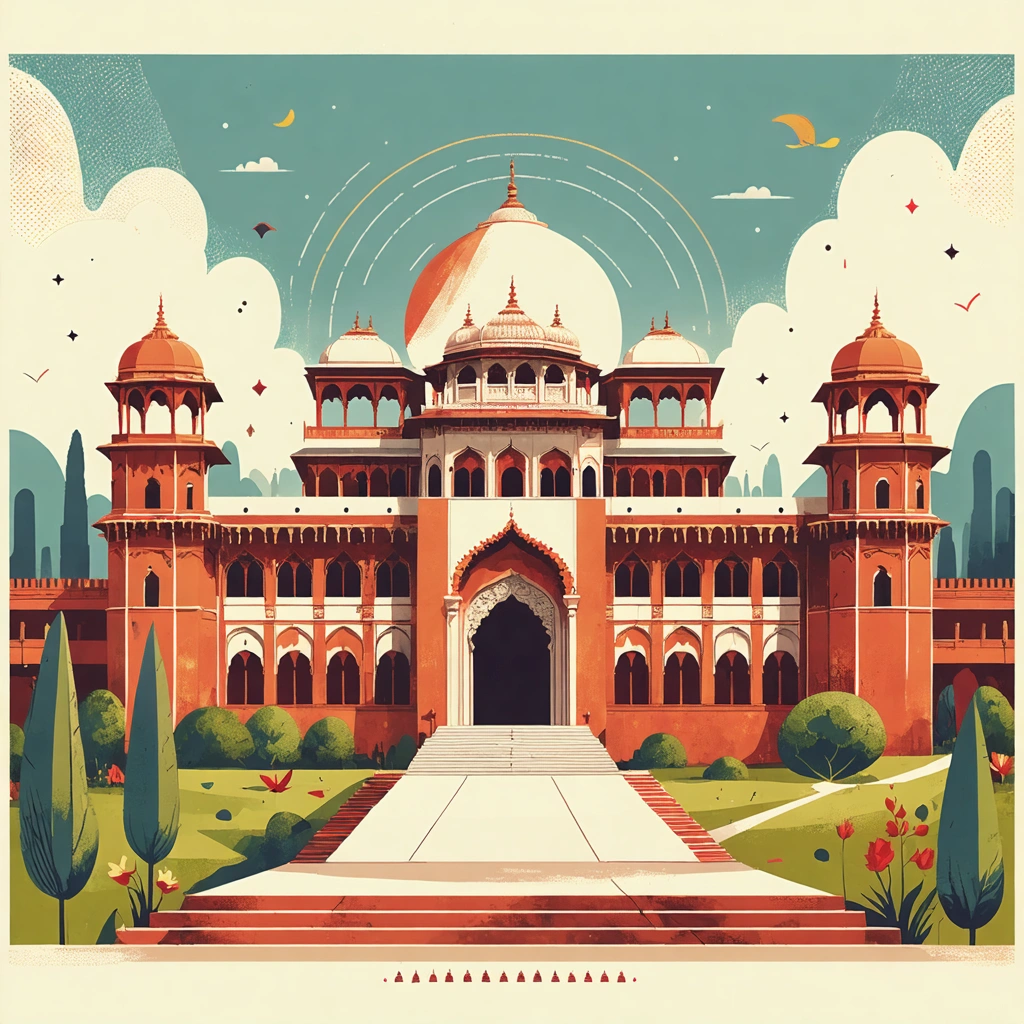
Unveiling the Forgotten Chapter of Prachin Bharat Ka Itihas
When we think about India’s history, it’s all too easy to get caught up in the narratives shaped by colonial times—stories of conquest, trade, and exploitation that often overshadow the incredible legacy that preceded them. But pause for a moment and ask yourself: What do you really know about Prachin Bharat Ka Itihas, the ancient history of India that laid the groundwork for one of the world’s most complex civilizations? This is not just about dates and dynasties; it’s about understanding a civilization that thrived on knowledge, diversity, and innovation long before foreign powers set foot on its soil.
Imagine a land where the roots of learning ran deep, where monumental universities flourished, and where rulers like the Mughal Samrajya Ke Shasak wielded power with a distinct vision—yet were themselves heirs to a rich cultural tapestry. This article invites you on a journey through time, exploring the vibrant epochs of India’s pre-colonial past, shedding light on key figures, educational institutions, and political empires that shaped the subcontinent’s identity far beyond the colonial shadow.
Why Does Prachin Bharat Ka Itihas Matter Today?
The story of India’s ancient past is more than an academic curiosity; it’s a mirror reflecting the country’s soul. Unfortunately, many aspects of this era remain underappreciated or misunderstood, often lumped together as “ancient” and left behind in school textbooks. The truth is, Prachin Bharat Ka Itihas offers profound insights into governance, culture, education, and the arts that continue to influence India’s modern ethos.
For instance, consider the question: Nalanda Vishwavidyalaya Kisne Banwaya? Nalanda University wasn’t built overnight by a single visionary but evolved as a hub of global scholarship attracting students and scholars from far-flung lands. It represents the zenith of intellectual pursuit in ancient India and serves as a testament to the country’s commitment to knowledge long before Western universities came into being.
Moreover, the reign of various Mughal Samrajya Ke Shasak left an indelible mark on architecture, administration, and culture, blending indigenous traditions with Persian influences. Understanding these rulers in the context of pre-colonial India helps us appreciate the layered complexity of Indian history rather than viewing it through a simplistic lens of colonial conquest and resistance.
What You Will Discover in This Exploration
Throughout this article, we will delve into:
- The early civilizations and kingdoms that established India’s foundational culture and societal structures.
- The rise and significance of Nalanda Vishwavidyalaya, including who was responsible for its establishment and its global impact.
- The era of Mughal Samrajya Ke Shasak—examining their contributions and how their rule fit into the broader pre-colonial timeline.
- How these historical insights challenge common misconceptions and enrich our understanding of India’s heritage.
By shining a spotlight on these aspects, this piece aims to reignite curiosity and respect for India’s pre-colonial grandeur, encouraging readers to see the past not as a distant memory but as a living narrative that continues to shape the present and future.

India’s Pre-Colonial History: Reflecting on India’s Rich History Before Colonial Rule
Understanding Prachin Bharat Ka Itihas (Ancient Indian History)
Prachin Bharat Ka Itihas, or Ancient Indian History, refers to the extensive and varied historical period before the advent of colonial powers like the British. This era spans from the Indus Valley Civilization (around 2500 BCE) through the Vedic period, the rise of powerful empires like the Maurya and Gupta dynasties, and the flourishing of art, science, philosophy, and religion.
This period is crucial to understanding the foundations of Indian culture and civilization. It was marked by the development of early urban centers, sophisticated trade networks, and rich literary traditions such as the Vedas, Upanishads, and later epics like the Mahabharata and Ramayana.
Moreover, Prachin Bharat Ka Itihas highlights India as a melting pot of diverse ethnicities, languages, and religions, setting the stage for its pluralistic society today. The cultural and intellectual developments during this era significantly influenced not only the subcontinent but also neighboring regions through trade and cultural exchange.
Nalanda Vishwavidyalaya Kisne Banwaya? (Who Established Nalanda University?)
Nalanda Vishwavidyalaya, one of the world’s earliest residential universities and a beacon of ancient Indian education, was established during the Gupta period, around the 5th century CE. It is widely attributed to the patronage of the Gupta emperor Kumaragupta I. Later, the university received significant support from subsequent rulers such as Harsha and other regional kings.
Nalanda was not just a center for Buddhist studies but also offered education in subjects like logic, grammar, medicine, and philosophy, attracting students from across Asia, including China, Tibet, Korea, and Central Asia. The university’s architecture and vast library were renowned for their grandeur and intellectual richness.
The establishment and flourishing of Nalanda Vishwavidyalaya underscore the advanced state of education and scholarship in Prachin Bharat Ka Itihas and highlight India’s role in the global transfer of knowledge during the ancient and early medieval periods.
Who Were the Mughal Samrajya Ke Shasak? (Rulers of the Mughal Empire?)
The Mughal Samrajya Ke Shasak, or rulers of the Mughal Empire, were a series of emperors who governed most of the Indian subcontinent from the early 16th century to the mid-18th century, with their reign ending formally in the 19th century. The empire was founded by Babur in 1526 after his victory at the Battle of Panipat.
Some of the most notable Mughal rulers include:
- Babur (r. 1526–1530): Founder of the empire, established Mughal rule in India.
- Akbar the Great (r. 1556–1605): Known for his administrative reforms, religious tolerance, and cultural patronage.
- Jahangir (r. 1605–1627): Continued Akbar’s policies and promoted the arts.
- Shah Jahan (r. 1628–1658): Commissioned the Taj Mahal and expanded the empire’s architecture.
- Aurangzeb (r. 1658–1707): The last of the strong emperors, known for his conservative policies and expansion of Mughal territory.
The Mughal Empire was marked by a sophisticated administrative system, a flourishing of arts and architecture, and the integration of diverse cultural traditions. However, it also faced internal challenges and external pressures that eventually led to its decline before British colonial rule.
Why Reflect on India’s Pre-Colonial Past?
Reflecting on India’s pre-colonial history is essential to appreciate the depth and diversity of its cultural, political, and social heritage. It helps explain:
- The roots of Indian civilization: Many traditions, social structures, and institutions have their origins in this era.
- The evolution of Indian society: Understanding ancient governance, education systems like Nalanda Vishwavidyalaya, and dynasties such as the Mughals offers insight into India’s complex historical layers.
- India’s global contributions: The exchange of ideas through trade and education shaped not only India but neighboring regions and beyond.
- The resilience and continuity of Indian culture: Despite invasions and changes in rulership, many cultural elements endured and evolved over centuries.
By deeply understanding Prachin Bharat Ka Itihas and the roles played by institutions like Nalanda and rulers like the Mughal Samrajya Ke Shasak, one gains a comprehensive perspective of the forces that shaped modern India before colonial disruption.
Conclusion
India’s pre-colonial history is a rich tapestry woven with remarkable achievements in governance, education, culture, and art. From the ancient universities like Nalanda Vishwavidyalaya, established by visionary rulers, to the expansive Mughal Empire and its influential shasaks, the legacy of this era forms the foundation of India’s identity. Reflecting on this period allows us to appreciate the sophistication and diversity of Prachin Bharat Ka Itihas and understand how it continues to influence India’s social and cultural fabric today.


